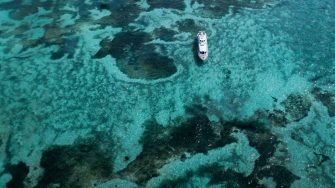
Physical Oceanography is the study of the dynamics and thermodynamic of the ocean. Processes explored by physical oceanographers can range from the spreading of near shore pollution over days to changes in the global climate over millennia. At its heart is the study of the mathematical equations that describe fluid flow, and how these are used in the context of the ocean.
At UNSW, our Honours in Physical Oceanography is unique, as it is offered within the School of Mathematics and Statistics.
Teaching and projects are led by academics who are both practitioners of Physical Oceanography but also experienced educators in the mathematical sciences. UNSW thus offers a unique bridge for graduates of numerate fields (mathematics, statistics, physics, engineering etc.) to enter Physical Oceanography.
Students are expected to complete the equivalent of five courses (totalling 30 units of credit), one of which can be completed outside of the School, and to complete an Honours project (worth 18 units of credit).
For other information about doing Honours in Physical Oceanography and specific entry requirements, see the UNSW Handbook.
Honours Coordinator - Physical Oceanography
Associate Professor Amandine Schaeffer
E: a.schaeffer@unsw.edu.au
T: 02 93851679
Office: H13 Anita B Lawrence East 4102
Suggested honours topics
Other projects are possible, and you should contact any potential supervisors to discuss your options.
-
- Lagrangian Coherent Structures in Ocean and Atmosphere Models
- Modelling of turbulent transport
- Construction of matrix models for geophysical flows
- Modelling of turbulent transport
- Simulating fractal curves in turbulent fluid flows
- Ocean current velocimetry from ultra-high resolution satellite imagery
- Fluid transport by vortex ring entrainment
- Fluid dynamics of cycling peloton formation
- Characterising marine extremes along the coast of southern NSW
- Watermass characteristics of eddies in the Tasman Sea
- Dynamics of surface dispersion and retention at the ocean's surface.
- Building an ocean heat budget from observations
- Exploring the theory of Navier-Stokes equations and their applications to fluid flow
- Novel machine learning and optimisation techniques to characterise the ocean and provide a blueprint for quantifying the ocean's role in a changing climate.
- How does heat get into the ocean? An investigation of the physical mechanisms that control the ocean's uptake of heat and its effect on climate.
- Making climate models work better: Developing new methods to validate and improve the inner workings of numerical climate models and improve their projections of global warming and its impacts.
- Will it mix? New perspectives on turbulence in rotating fluid flows and how we estimate mixing from observations.
- Lagrangian Coherent Structures in Ocean and Atmosphere Models
